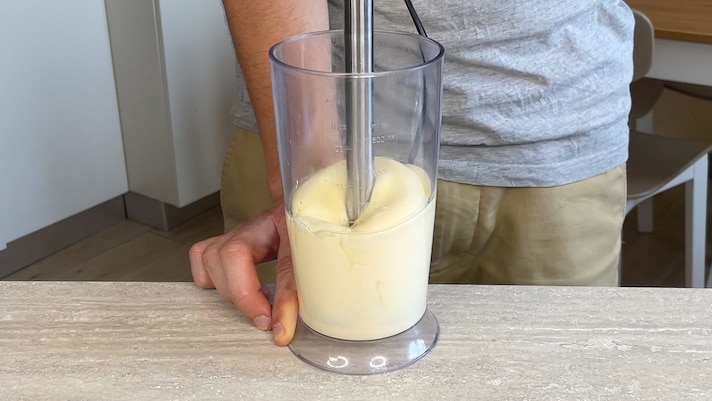
Velvety and creamy, mayonnaise can be considered the queen of sauces, perfect for filling sandwiches and tramezzini, as an accompaniment to fish and meat dishes, and as a condiment (raise your hand if you put it on rice salad). Well, this popular preparation is made with a few simple ingredients, such as eggs (usually just the yolks, but there are various schools of thought), lemon juice or white wine vinegar (although some use both), oil (sunflower, peanut, or a mix with extra virgin olive oil), mustard (optional), and a pinch of salt. Yet something can go wrong. The reason? Mayonnaise is technically an emulsion, or a temporarily stable mixture that combines two fluids that normally separate, in this case the oil and the aqueous component: and this is why it sometimes goes haywire, becoming grainy or too runny. However, it is forbidden to throw it away, because it can be saved in an easy and practical way.
Why Does Mayonnaise Curdle?
Before addressing the problem, let's look at the most common causes. When you lose control of your mayonnaise, it's likely difficult to pinpoint a single cause, as there could be a combination of factors. In general, however, note these things to pay attention to:
- Eggs must be fresh: the yolk contains lecithin, a natural emulsifier essential for stabilizing the components of mayonnaise (and is also used in the food industry as an additive). The older the eggs, the less binding capacity they have. For the same reason, eggs must be used at room temperature, as well as the other ingredients, as the cold inhibits their action.
- The oil should be poured in slowly to allow the lecithin to combine with the water through the continuous and vigorous beating of the whisk (manual or electric).
- Keep the same direction and the same rhythm: this is a general rule in the kitchen when whipping a mixture, just like you do with cream or egg whites, preventing it from deflating.
- Be careful with the amount of oil, vinegar, or lemon juice, because if you use too much, they can make the mayonnaise too runny.
- If you make mayonnaise using the immersion blender trick to have it ready in less than a minute, you need to put the ingredients in the jug all at once, then insert the blender all the way in and turn it on without lifting it: when the mixture starts to take shape, slowly remove it, moving it from the bottom upwards.

How to Recover Mayonnaise That Has Curdled
Despite all the precautions taken, the result isn't what you hoped for: you're faced with a messy preparation, a bit watery and a bit lumpy, or completely liquid, in both versions decidedly unusable. To recover it, there's a waste-preventing method that always works: adding an egg yolk, precisely to give a boost of lecithins that promote emulsion. How is it done?
- If the mayonnaise is lumpy, but not excessively liquid, then take a clean bowl and beat an egg yolk at room temperature inside: at this point, little by little, add a spoonful of the curdled mayonnaise, always continuing to beat with the electric whisk without stopping, until you have finished it.
- If your mayonnaise is too runny, use an immersion blender: place the egg yolk (always at room temperature) in a clean bowl. Turn the blender on medium speed and slowly pour in the curdled mayonnaise, as if it were oil, using a bottom-up motion. Finally, taste and season with lemon juice and salt, blending until well combined. A drop of warm water can help thin the mixture if it's too thick.

Did you notice that the mistake was in using too much oil? Instead of adding another fatty element (the egg yolk), you can rebuild the emulsion by starting with a small amount of the curdled mayonnaise, transferring it to a bowl or jug with a teaspoon of vinegar or lemon juice, whipping it with a whisk or mixer and gradually adding more mayonnaise and more liquid, alternating them, so as to balance the liquid part until the correct texture is achieved.
;Resize,width=767;)
